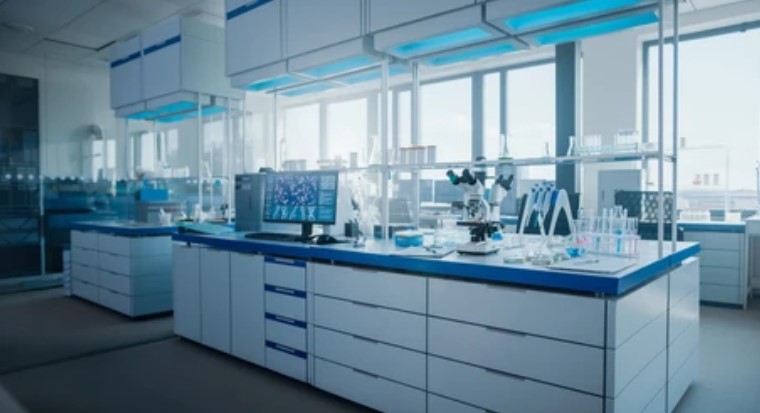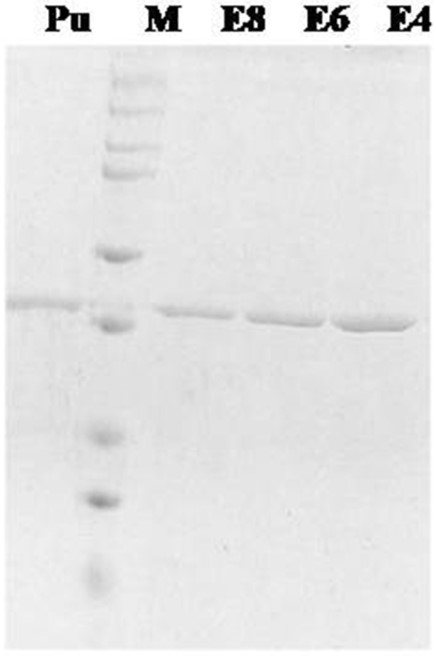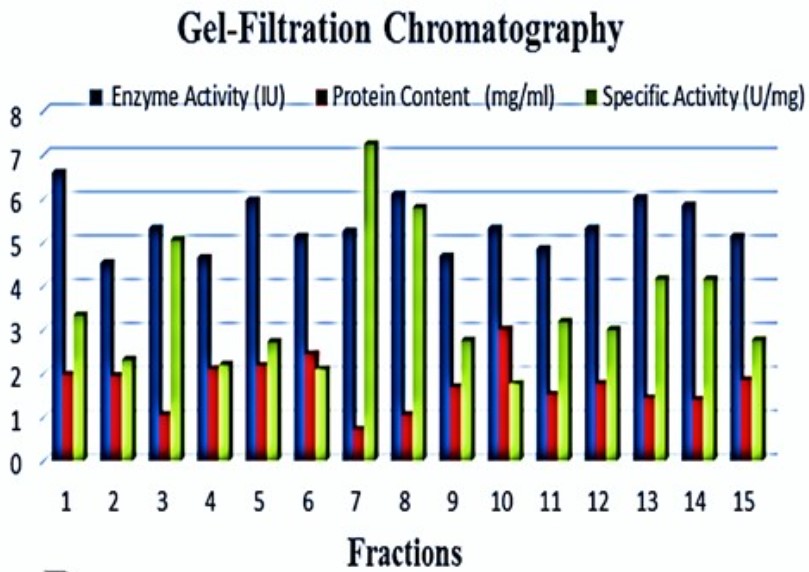Gel Filtration Chromatography
Background
Overview
Gel Filtration Chromatography (GFC), also known as molecular sieve Chromatography or Size Exclusion Chromatography (SEC), is a chromatographic technique that separates molecules based on their size. In this technique, the mixture is passed through a column containing gel particles. The large molecules are eluted out of the column because they cannot enter the pores of the gel particles. Small molecules, on the other hand, can enter the pores of the gel particles, so they stay in the column for a longer time, and then are eluted out.
Gel Classification
Gel filtration chromatography, also known as exclusion chromatography or molecular sieve method, separates proteins according to their size and shape. This technique involves several types of gels, such as agarose gels, polyacrylamide gels, dextran gels, etc., each with its specific pore size and crosslinking degree, suitable for different ranges of molecular weight separation. Here are some categories:

Agarose gel chromatography: Agarose gel has good chemical stability and biocompatibility, and is often used for the separation of proteins and polysaccharides.
Polyacrylamide gel chromatography: Polyacrylamide gel has a uniform pore size distribution and is suitable for fine separation of proteins and nucleic acids.
Dextran gel chromatography: Dextran gel medium is crosslinked by dextran and propylene oxide, and the commonly used Sephadex G series is an example of this kind of gel. They are divided into different models according to the amount of water absorption, and are suitable for the separation of different molecular weights.
Operation Procedure
Sample preparation: Dissolve the sample to be separated in an appropriate buffer.
Column loading: Select the appropriate gel medium and fill the column.
Balance: Use a buffer through the column until the baseline is stable.
Sample loading: The sample is loaded onto the column.
Elution: The buffer solution is used to eluate the sample components in turn according to the molecular size.
Collection and analysis: The target components in the eluent are collected for subsequent analysis or application.
Advantages of GFC
Non-denaturing conditions. GFC is usually performed under mild conditions suitable for purification of proteins and other biological macromolecules without altering their biological activity.
Fast separation. GFC can quickly separate components in macromolecular mixtures.
Sample recovery. Since there is no chemical denaturation during the separation process, the recovery rate of the target molecule is usually higher.
No gradient required. Unlike ion exchange chromatography or affinity chromatography, GFC usually does not require complex gradient elution.

Development Trend
With the progress of science and technology and the change of market demand, this technology is also constantly developing and evolving. Here are some trends in gel filtration chromatography:
Development of high-performance materials. In order to improve the separation efficiency and resolution, researchers are developing novel gel materials. These materials have better pore structure and stability, and can be used in a wider pH range and temperature conditions, thus expanding the application range of GFC technology.
The combination of multidimensional chromatography techniques. Combining GFC with other chromatography techniques (such as ion exchange chromatography, affinity chromatography, reversed-phase chromatography, etc.) to form a multidimensional chromatography system allows for more complex sample separation and more accurate analysis. The development of this multi-dimensional chromatography technique provides the possibility for comprehensive analysis of complex samples.
Automation and high throughput. With the rapid development of the biotechnology and pharmaceutical industries, there is an increasing demand for high-throughput screening and purification technologies. The automated GFC system can improve the sample processing speed, reduce human error, and ensure the consistency and repeatability of experimental results.
Innovations in instrumentation and software. The precision and sensitivity of chromatographic instruments continue to improve, while software analysis tools continue to improve. These advances allow GFC techniques to provide more detailed information on the distribution of molecular sizes, contributing to a better understanding of the composition and properties of samples.
Applications
- Purification of biomacromolecules. Gel filtration chromatography is an important means to separate and purify biological macromolecules (such as proteins, peptides, nucleic acids, etc.). Because it is simple, convenient and does not change the biological activity of the sample, it is especially suitable for separating those molecules with similar physical and chemical properties but different sizes, such as different polymerization degrees of polymers.
- Molecular weight determination. Gel filtration chromatography can be used to preliminarily determine the molecular weight of proteins or other macromolecules. The standard curve of elution volume (Ve) or partition coefficient (Kav) and logarithm of molecular weight was established by chromatographic analysis of the standard substance with known molecular weight, and then Ve or Kav of unknown substance was determined and its molecular weight was estimated by comparing the standard curve.
- Remove heat source material. The heat source material is usually a macromolecular complex produced by microorganisms, which can be separated from the small molecule material by gel filtration chromatography and thus removed. This method is simple and effective, and is suitable for the removal of heat source materials from samples such as water, amino acids and injection.
- Concentration of solution. By using the water absorption of the gel particles, the macromolecular sample solution can be concentrated. When dried gel particles are added to the solution, the gel absorbs a lot of water, while large molecules are excluded. By removing the gel particles, the concentrated sample solution can be obtained.
- Gradient renaturation of proteins. In order to improve the efficiency of protein renaturation, a gradient gel filtration chromatography method was developed. The gradient of denaturant concentration is pre-set in the column, so that the protein gradually experiences the environment of decreasing denaturant concentration after entering the column, so as to effectively reduce the formation of aggregates and realize the separation of aggregates and folded proteins.

Case Study
Case Study 1: Agarose Resin
Type III polyketide synthases (type III PKSs) are single homodimeric enzymes. BLASTX analyses of Nanopore sequence derived metagenome with the in-house created PKS database revealed a full length type III PKS from a 5 kb fragment. To functionally characterize the gene, it was synthesized, cloned into pET28a and pColdI vectors under T7 and csp promoters, respectively, and expressed in Escherichia coli Rosetta(DE3) pLysS. The optimized PKS (OptiPKS) was expressed as inclusion bodies under both promoters. The inclusion bodies were successfully solubilised using low concentration of urea, refolded and purified using Ni-NTA Agarose resin. The purified OptiPKS was tested for functionality using fatty acyl-CoA substrates at various temperatures. High performance liquid chromatography (HPLC) analyses revealed that OptiPKS produced tri and tetraketide pyrones using C4 to C10 acyl-CoA starter substrates. Further characterization and mutation of the enzyme would reveal its functional significance.

(Nishanthika Thenmozhi Kulasekaran, 2024)
Fig1. Lane Pu, purified OptiPKS. Lanes E4, E6 and E8 show elution fractions of refolded OptiPKS from Ni-NTA agarose column.
Case Study 2: CL-6B Agarose
In this study, three homogeneous fractions, PSP-N-b-1, PSP-N-b-2, and PSP-N-c-1, were obtained from an aqueous extract of Polygonatum using DEAE cellulose column chromatography, CL-6B agarose gel chromatography, and Sephadex G100 chromatography. Their monosaccharide compositions and molecular weights were analyzed. The results revealed that PSP-N-b-1, PSP-N-b-2, and PSP-N-c-1 are primarily composed of six monosaccharides: Man (mannose), GlcA (glucuronic acid), Rha (rhamnose), GalA (galacturonic acid), Glc (glucose), and Ara (arabinose), with molecular weights of 6.3 KDa, 5.78 KDa, and 3.45 KDa, respectively. Furthermore, Polygonatum polysaccharides exhibited protective effects against CCL4-induced liver damage in HepG2 cells in vitro, operating through both anti-oxidant and anti-inflammatory mechanisms.

(Yutong Wang, 2024)
Fig2. Elution curve of PSP-N on Sepharose CL-6B gel.
Case Study 3: Gel-filtration chromatography
Cardiovascular disorders, including acute myocardial infarction (AMI), often lead to blood clot formation, impacting blood circulation. Streptokinase, a cost-effective and widely available thrombolytic agent, is crucial in treating thrombosis. This study aimed to produce streptokinase from Streptococcus pyogenes EBL-48 and compare its efficacy with heparin in an animal model. Streptokinase was produced using pre-optimized fermentation media and purified through ion exchange and gel-filtration chromatography. In vivo analysis involved inducing clots in a trial animal model using ferric chloride, comparing streptokinase with heparin. Ultrasonography assessed the clot-lysing activity of streptokinase. Streptokinase (47 kDa) effectively lysed clots, proving its low cost, easy production, and minimal adverse effects. Ultrasonography confirmed its fibrinolytic efficacy.

(S Yousaf, 2024)
Fig3. Graph representing enzyme activity, protein, and specific activity after Gel-filtration chromatography.
Advantages
- Professional technology and research and development advantages. We have a professional technical team dedicated to the development and improvement of chromatographic columns to adapt to the separation needs of different biomolecules.
- Advanced production equipment and technology. We use advanced production equipment and technology to ensure stable and reliable product quality and meet strict production standards.
- Rich product line. We offer a variety of models and specifications of gel filtration substrates to meet the needs of different customers.
- Customized services. We can provide customized fillers and services to meet the requirements of different biological processes according to the specific needs of customers.
Creative BioMart can provide various types of gel filtration chromatography related matrixes to meet customer’s different research goals. You can also let us know if you have any customized requirements. Please contact us for more product details.
References
- Thenmozhi Kulasekaran N.; et al. Functional analysis of a putative type III polyketide synthase from deep-sea sediment metagenome. J Biosci Bioeng. 2024;137(4):239-244.
- Wang Y.; et al. Isolation, Purification, Fractionation, and Hepatoprotective Activity of Polygonatum Polysaccharides. Molecules. 2024;29(5):1038.
- Yousaf S.; et al. Evaluation of clinical efficacy of streptokinase by comparison with the thrombolytic agent on animal model. Braz J Biol. 2024;84:e271083.
















